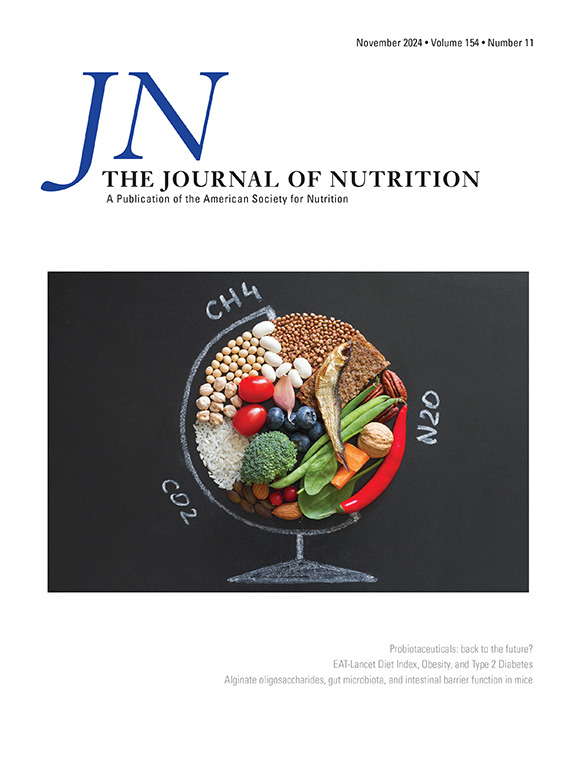The Role of Folate Receptor α Autoantibodies in Folate Deficiency, Disease Severity, and Treatment Response in Adolescents with Major Depressive Disorder
IF 3.7
3区 医学
Q2 NUTRITION & DIETETICS
引用次数: 0
Abstract
Background
Low concentrations of systemic folates have been associated with a higher risk of major depressive disorder (MDD) and more severe symptoms. Moreover, folate supplementation has been shown to increase the response to selective serotonin reuptake inhibitors (SSRIs) and serotonin norepinephrine reuptake inhibitors (SNRIs). Folates reach the brain through the choroid plexus via transcytosis mediated by the folate receptor alpha (FRα). FRα also represents the main mechanism of folate retrieval from the nascent urine. Autoantibodies against the FRα autoantibodies(FRAAs) have been found in the serum of individuals with cerebral folate deficiency.
Objectives
This study aimed to assess the role of serum FRAA titer on serum folate concentration, disease severity, and response to the SSRI/SNRI treatment in adolescents with MDD.
Methods
Serum samples at baseline obtained from the participants of a large multicenter intervention trial in moderately to severely depressed youth were analyzed. Quantification of FRAA was performed by enzyme-linked immunosorbent assay. Serum folate concentration was determined by radioligand binding assay.
Results
FRAA titer in the patients with folate deficiency (≤3.0 ng/mL) was significantly higher than that in the patients with a normal folate concentration, and a low FRAA titer was associated with a reduced risk of folate deficiency. No correlation was found between the Children’s Depression Rating Scale—Revised score and the serum folate concentration or the FRAA titer. In regression analysis, the effect size of the serum folate concentration on the response to SSRI/SNRI was larger than that of the FRAA titer. The response rate to the treatment in the high-folate group was ∼4 times that in the low-folate group (28.5% compared with 6.7%).
Conclusions
In conclusion, patients with high-FRAA titers carry a higher risk of folate deficiency. Moreover, the response to SSRI/SNRI treatment is less likely in patients with folate deficiency.
叶酸受体α自身抗体在青少年重度抑郁症叶酸缺乏、疾病严重程度和治疗反应中的作用
背景:低水平的全身性叶酸与重度抑郁症(MDD)的高风险和更严重的症状相关。此外,叶酸补充剂已被证明可以增加对选择性5 -羟色胺再摄取抑制剂(SSRIs)和5 -羟色胺去甲肾上腺素再摄取抑制剂(SNRIs)的反应。叶酸通过由叶酸受体α (FRα)介导的胞吞作用通过脉络膜丛到达大脑。FRα也代表了叶酸从初生尿液中恢复的主要机制。在脑叶酸缺乏个体的血清中发现了抗fra (FRAA)的自身抗体。目的:评价血清FRAA滴度对青少年重度抑郁症患者血清叶酸水平、病情严重程度及对SSRI/SNRI治疗反应的影响。方法:从一项大型多中心干预试验中获得的中重度抑郁症青年参与者的基线血清样本进行分析。采用酶联免疫吸附法(ELISA)定量测定FRAA。用放射配体结合法测定血清叶酸浓度。结果:叶酸缺乏症患者(≤3.0 ng/mL)的FRAA滴度显著高于叶酸正常患者,低FRAA滴度与叶酸缺乏症风险降低相关。儿童抑郁评定量表-修订(CDRS-R)评分与血清叶酸水平或FRAA滴度之间未发现相关性。在回归分析中,血清叶酸浓度对SSRI/SNRI反应的效应量大于FRAA滴度。高叶酸组治疗有效率约为低叶酸组的4倍(28.5% vs. 6.7%)。结论:总之,FRAA滴度高的患者叶酸缺乏的风险更高。此外,叶酸缺乏症患者对SSRI/SNRI治疗的反应不太可能。
本文章由计算机程序翻译,如有差异,请以英文原文为准。
求助全文
约1分钟内获得全文
求助全文
来源期刊

Journal of Nutrition
医学-营养学
CiteScore
7.60
自引率
4.80%
发文量
260
审稿时长
39 days
期刊介绍:
The Journal of Nutrition (JN/J Nutr) publishes peer-reviewed original research papers covering all aspects of experimental nutrition in humans and other animal species; special articles such as reviews and biographies of prominent nutrition scientists; and issues, opinions, and commentaries on controversial issues in nutrition. Supplements are frequently published to provide extended discussion of topics of special interest.
 求助内容:
求助内容: 应助结果提醒方式:
应助结果提醒方式:


